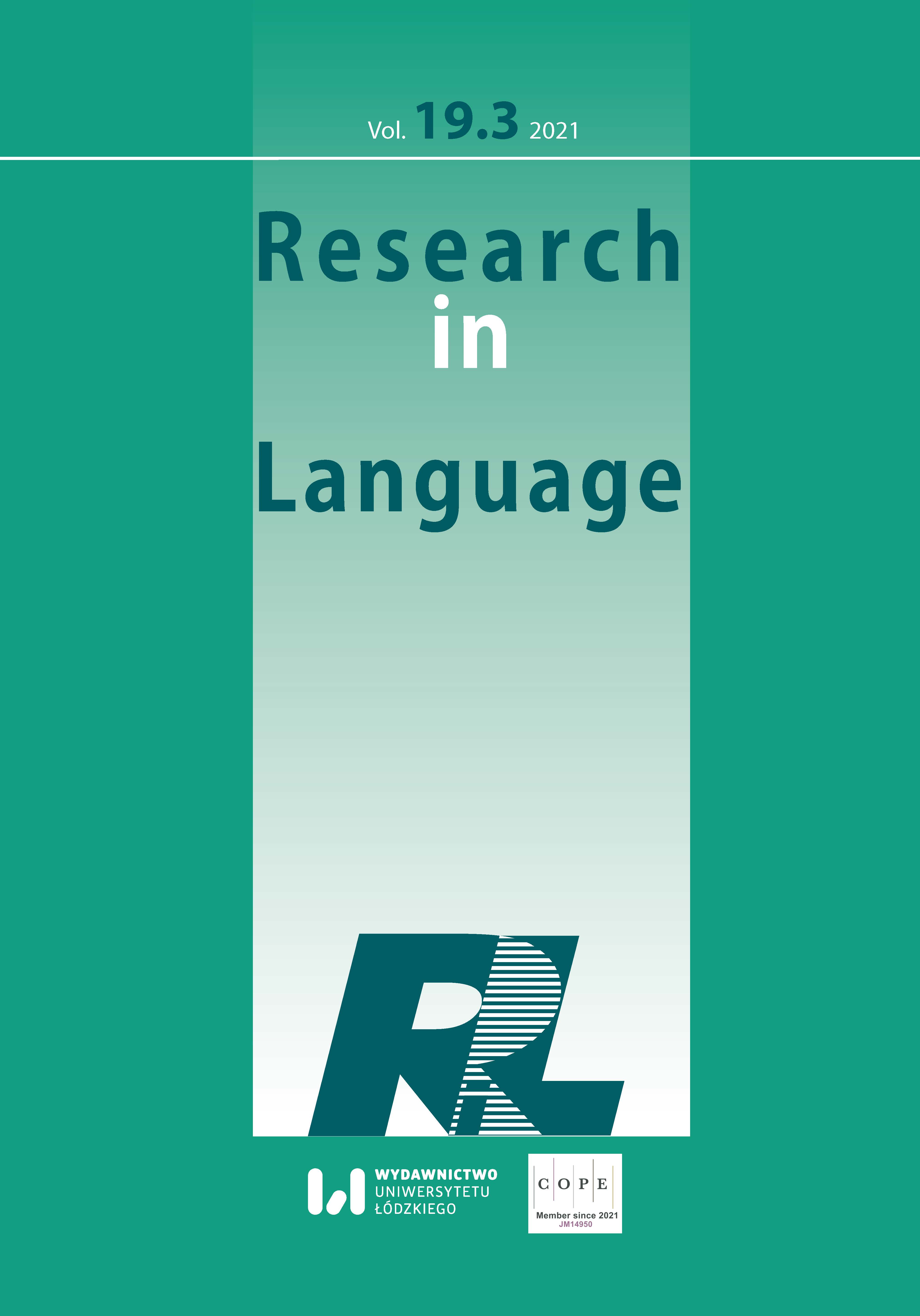Non-Commercial Advertisements: Multimodal Metaphor, Metonymy and Conceptual Blending at Work
DOI:
https://doi.org/10.18778/1731-7533.19.3.05Keywords:
conceptual blending, metonymy, multimodal metaphor, non-commercial advertisementsAbstract
Nowadays the omnipresence of advertisements, and the necessity of conscious and subconscious mental interpretation of their hidden messages, can hardly be overlooked. In the present article, the authors attempt to provide additional evidence for the role of multimodal metaphor, metonymy, and conceptual blending in hidden cognitive mechanisms involved in the understanding and/or the correct interpretation of printed non-commercial advertisements and their overall communicative effect thus brought about. The objective is to consider and analyse text-image non-commercial advertisements randomly retrieved from the Internet; the analysis is carried out from the cognitive perspective and aims at discussing the functions of multimodal metaphor, metonymy and conceptual blending as powerful mechanisms exploited for creative purposes in advertising texts and accompanying images, and thus in conveying the central ideas embedded in the adverts.
References
Alousque, Isabel Negro. 2014. Verbo-pictorial metaphor in French advertising. Journal of French Language Studies, 24, 155-180. https://doi.org/10.1017/S0959269513000045
Google Scholar
DOI: https://doi.org/10.1017/S0959269513000045
Barcelona, Antonio. 1997. Clarifying and applying the notions of metaphor and metonymy within cognitive linguistics. In ATLANTIS XIX (1), 21-48.
Google Scholar
Barcelona, Antonio. 2000. Introduction: The cognitive theory of metaphor and metonymy. In: Barcelona, A. (ed.). Metaphor and Metonymy at the Crossroads: A Cognitive Perspective, 1-28. Berlin/New York: Mouton de Gruyter. https://doi.org/10.1515/9783110894677.1
Google Scholar
DOI: https://doi.org/10.1515/9783110894677.1
Black, Max. 1962. Models and Metaphors: Studies in Language and Philosophy. Ithaca, N.Y.: Cornell University Press. https://doi.org/10.7591/9781501741326
Google Scholar
DOI: https://doi.org/10.7591/9781501741326
Black, Max. 1979. More about Metaphor. In: Ortony A. (ed). Metaphor and Thought, 19-43. Cambridge: Cambridge University Press. https://doi.org/10.1017/CBO9781139173865.004
Google Scholar
DOI: https://doi.org/10.1017/CBO9781139173865.004
Cook, Guy. 2001 [1996]. The Discourse of Advertising. Second Edition. London: Routledge. https://doi.org/10.4324/9780203978153
Google Scholar
DOI: https://doi.org/10.4324/9780203978153
Croft, William. 1993. The role of domains in the interpretation of metaphors and metonymies. In Cognitive Linguistics 4-4, 335-370. https://doi.org/10.1515/cogl.1993.4.4.335
Google Scholar
DOI: https://doi.org/10.1515/cogl.1993.4.4.335
Fauconnier, Gille and Turner, Mark. 2002. The Way We Think. New York: Basic Books.
Google Scholar
Forceville, Charles. 1996. Pictorial Metaphor in Advertising. London: Routledge. https://doi.org/10.4324/9780203272305
Google Scholar
DOI: https://doi.org/10.4324/9780203272305
Forceville, Charles. 2007. Multimodal Metaphor in Ten Dutch TV Commercials. In The Public Journal of Semiotics I (1), January 2007, 15-34. https://doi.org/10.37693/pjos.2007.1.8812
Google Scholar
DOI: https://doi.org/10.37693/pjos.2007.1.8812
Forceville, Charles. 2008. Metaphor in Pictures and Multimodal Representations. In: Gibbs, R.W.Jr. (ed.). The Cambridge Handbook of Metaphor and Thought, 462-482. Cambridge: Cambridge University Press. https://doi.org/10.1017/CBO9780511816802.028
Google Scholar
DOI: https://doi.org/10.1017/CBO9780511816802.028
Forceville, Charles. (2009a). Non-verbal and Multimodal Metaphor in a Cognitivist Framework: Agenda for Research. In: Forceville, Ch. and Urios-Aparisi E. (eds). Multimodal Metaphor, 19-42. Berlin/New York: Mounton de Gruyter. https://doi.org/10.1515/9783110215366
Google Scholar
DOI: https://doi.org/10.1515/9783110215366
Forceville, Charles. 2009b. A Course in Pictorial and Multimodal Metaphor. Available from: https://semioticon.com/sio/courses/pictorial-multimodal-metaphor/ [Accessed: 15th August 2018].
Google Scholar
Hidalgo-Downing, Laura and Kraljevic Mujic, Blanca. 2011. Multimodal metonymy and metaphor as complex discourse resources for creativity in ICT advertising discourse. In Gonzálvez García F., Peña S., and Pérez-Hernández L. (eds) Metaphor and Metonymy Revisited beyond the Contemporary Theory of Metaphor, 153–178. Amsterdam/Philadelphia: John Benjamins. https://doi.org/10.1075/rcl.9.1.08hid
Google Scholar
DOI: https://doi.org/10.1075/rcl.9.1.08hid
Kövecses, Zoltán. 2002. Metaphor: A Practical Introduction. Oxford: Oxford University Press
Google Scholar
Lakoff, George. and Johnson, Mark. 1980. Metaphors We Live By. Chicago, IL: University of Chicago Press.
Google Scholar
Lakoff, George. 1987. Women, Fire, and Dangerous Things: What Categories Reveal About the Mind. Chicago: University of Chicago Press. https://doi.org/10.7208/chicago/9780226471013.001.0001
Google Scholar
DOI: https://doi.org/10.7208/chicago/9780226471013.001.0001
Pérez-Sobrino, Paula. 2013. Metaphor Use in Advertising: Analysis of the interaction between multimodal metaphor and metonymy in a greenwashing advertisement. In: Gola, E. and Ervas F. (eds) Metaphor in Focus. Philosophical Perspectives on Metaphor Use, 67-82. Cambridge: Cambridge Scholars Publishing.
Google Scholar
Pérez-Sobrino, Paula. 2017. Multimodal Metaphor and Metonymy in Advertising. Amsterdam/Philadelphia: John Benjamins Publishing Company. https://doi.org/10.1075/ftl.2
Google Scholar
DOI: https://doi.org/10.1075/ftl.2
Qiu, Yingying. 2013. Interaction of Multimodal Metaphor and Metonymy in Public Service Advertising: A Case Study. In Theory and Practice in Language Studies, Vol. 3 No. 9, 1584-1589. https://doi.org/10.4304/tpls.3.9.1584-1589
Google Scholar
DOI: https://doi.org/10.4304/tpls.3.9.1584-1589
Ruiz de Mendoza Ibáñez, Francisco José. 1997a. Metaphor, metonymy and conceptual interaction. In Atlantis 19(1), 281-295.
Google Scholar
Ruiz de Mendoza Ibáñez, Francisco José. 1997b. Cognitive and pragmatic aspects of metonymy. In Cuadernos de Filología Inglesa, 6/2, 161-178, University of Murcia, Spain.
Google Scholar
Ruiz de Mendoza Ibáñez, Francisco José. 2000. The role of mappings and domains in understanding metonymy. In: Barcelona, A. (ed.). Metonymy and metaphor at the crossroads. A Cognitive Perspective, 109 – 132. Berlin/New York: Mouton de Gruyter. https://doi.org/10.1515/9783110894677.109
Google Scholar
DOI: https://doi.org/10.1515/9783110894677.109
Ruiz de Mendoza Ibáñez, Francisco José and Díez Velasco, Olga Isabel. (2002). Patterns of conceptual interaction. In: Dirven R. and Pörings R. (eds.) Metaphor and Metonymy in Comparison and Contrast, 489-532. Berlin/New York: Mouton de Gruyter. https://doi.org/10.1515/9783110219197.489
Google Scholar
DOI: https://doi.org/10.1515/9783110219197.489
Turner, Mark and Fauconnier, Gilles. 1995. Conceptual Integration and Formal Expression. In Metaphor and Symbolic Activity 10, 183-204. https://doi.org/10.1207/s15327868ms1003_3
Google Scholar
DOI: https://doi.org/10.1207/s15327868ms1003_3
Urios-Aparisi, Eduardo. 2009. Interaction of Multimodal Metaphor and Metonymy in TV Commercials: Four case studies. In: Forceville, Ch. and Urios-Aparisi E. (eds). Multimodal Metaphor, 95-117. Berlin/New York: Mounton de Gruyter.
Google Scholar
Downloads
Published
How to Cite
Issue
Section
License

This work is licensed under a Creative Commons Attribution-NonCommercial-NoDerivatives 4.0 International License.










